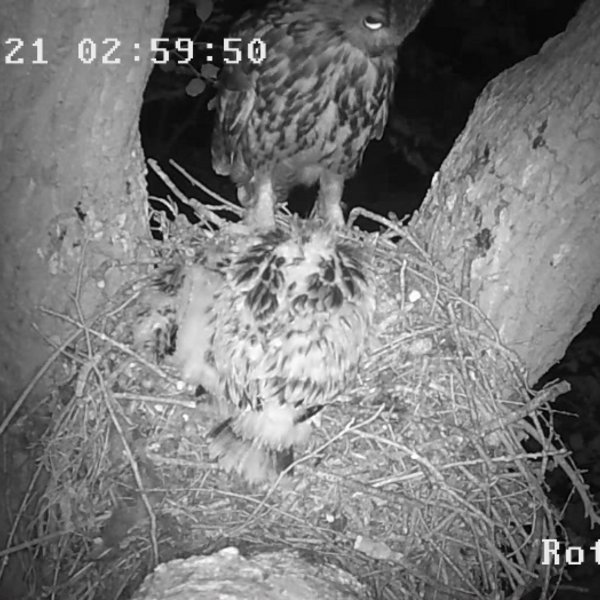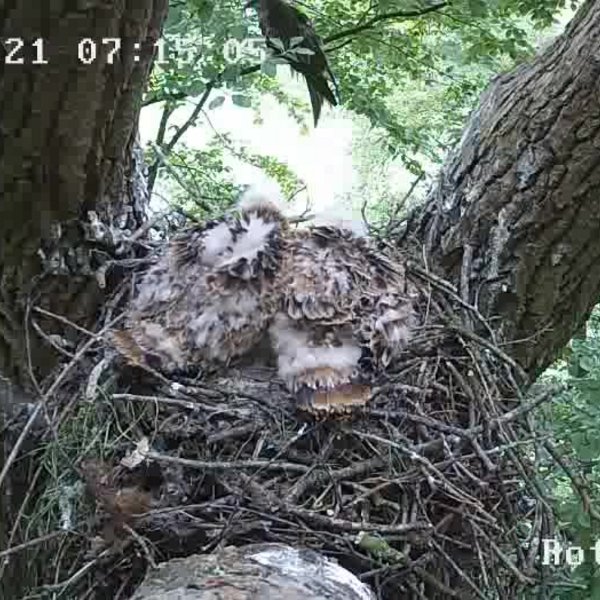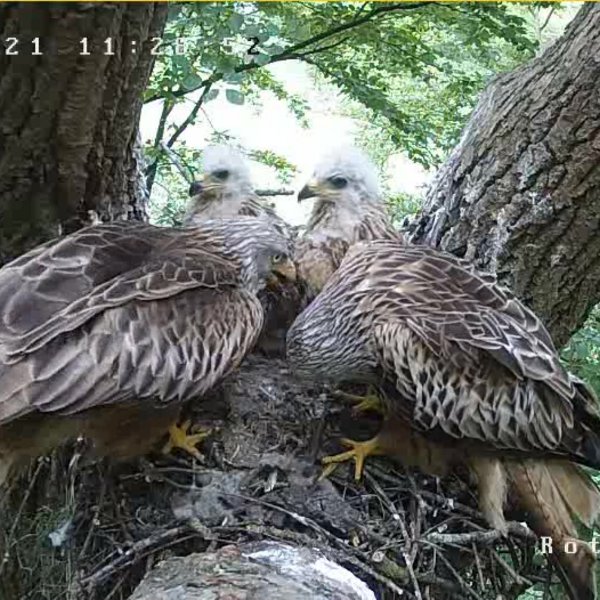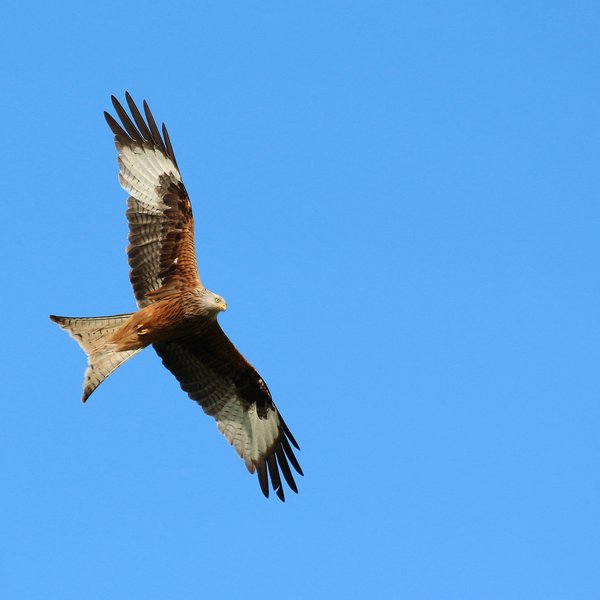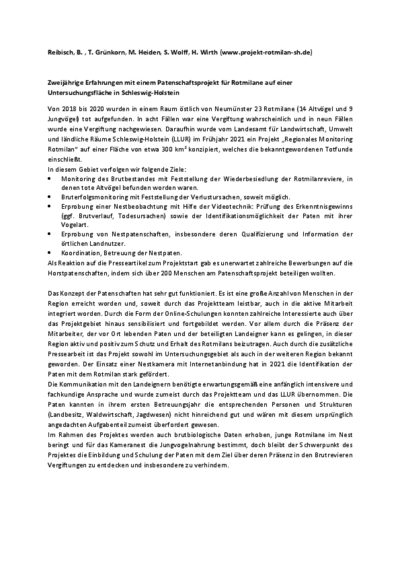The red kite SH project
In the red kite SH project, BioConsult SH and further project partners investigated the red kite population in a region of Schleswig-Holstein with a large number of poisoning incidents over the last years.
Nest cameras and guardians
More than half of the world's red kite population breeds in Germany, which therefore bears a special responsibility for this strictly protected bird of prey species. However, the birds are repeatedly victims of poisoning.
Project objectives
- Monitoring and re-colonisation of affected red kite territories
- Testing of possible nest monitoring
- Training of nest guardians
- Qualification of nest guardians and information for local land users
- Coordination of nest guardians
Methods
Nest cameras were installed to observe the birds around the clock and nest guardians were trained. Tasks of guardians include checks of the nest (from a safe distance) to document the breeding success or identify disturbances.
The red kite
About 15,000 red kite pairs breed in Germany, 240 of these in Schleswig-Holstein in mainly the eastern and south-eastern parts.
Wild red kite can live as long as 25 years. Once a year the birds hatch one to four eggs. The clutch size depends on the availability of food. In years with many mice females will lay more eggs. Incubation takes about 35 days. After hatching, the chicks will stay in the nest for between 45 and 60 days. Also the nestling time depends on the availability of food. Well-nourished nestlings develop faster.
Publications
Further information
Further information on the project including video material of a nest camera as well as training material are available on the project page.
Funded by
Funding period
2020 - 2021


